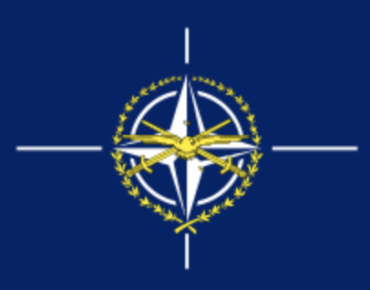NATO Targets AI Interoperability

The U.S. and its NATO allies are addressing interoperability issues as both sides of the Atlantic seek to integrate AI technologies into their national security strategies. Meanwhile, the security alliance is pivoting toward talent-rich India in an effort to blunt China’s aggressive AI strategy in Asia.
Those efforts have been spearheaded by the National Security Commission on Artificial Intelligence (NSCAI), which has issued a steady stream of quarterly recommendations for advancing dual-use AI technologies.
NATO is not far behind the U.S. military in integrating AI technologies, “but we want it to be further ahead,” said NSCAI Commissioner Jason Matheny, director of Center for Security and Emerging Technology at Georgetown University.
Interviewed during an NSCAI podcast, Matheny laid out the challenges and opportunities the 70-year-old alliance faces in integrating AI technologies. “For military interoperability, especially in an age when algorithms will be fighting against algorithms, you need to get the interoperability right.”
To that end, NATO members adopted an AI roadmap last year to begin the process of integrating AI technologies along with the deploying interoperable platforms. Technology interoperability has long proven difficult in an alliance that has expanded from a dozen founding members to its current 30.
The military alliance released a white paper during the summer outlining a five-year plan for AI development and deployment. NATO planners are also developing policies for the fielding of autonomous technologies.
“Getting all of this right really matters,” Matheny stressed. “The U.S. and its allies need to coordinate early and often” to align resources ranging from budgets to technical expertise as NATO ramps up AI deployments.
The alliance’s initial AI interoperability initiatives include simulations, war-gaming and pilot projects, Matheny added.
Those interoperability efforts will not be so restrictive as, for example, requiring AI developers to used a single programming language. “Industry has in fact found that you can support lots of different forms of software development simultaneously and still get the systems that are interoperable.”
Instead, NATO developers should seek standards, common frameworks and APIs. “When were using sensor data, we need to understand what the data frameworks are and ensure that the systems that are processing those data are going to work across the alliance,” the commission member said. That means data collected by a European member will work on a U.S. platform.
Interoperable cloud computing platforms are also being emphasized as a way to build and distribute tools among NATO members, Matheny added. Hence, the commission has recommended a common NATO cloud infrastructure to support interoperable AI development.
Matheny pointed to U.S. classified cloud infrastructure hosted by U.S. cloud vendors, most notably Amazon Web Services (NASDAQ: AMZN) for American intelligence agencies, as a “totally feasible” model for the alliance. “Being able to migrate to cloud computing infrastructure does provide a lot of advantages, and having a shared infrastructure with NATO allies doubles the benefits.”
NSCAI was formed to counter China’s aggressive push into AI, and the growing reality of algorithmic warfare. The commission is looking to India as a talent base and a counter to Chinese prowess in the regions outside the NATO alliance.
India’s strategic importance grows along with its economy, projected to soon be the third largest in the world. “India is really important,” Matheny stressed, along with its proximity to China.
“Any plan that is focused on emerging technology needs to have India as a priority,” he added. While China’s technological rise is tied to its integration into the global trading system along with infrastructure investments, “we should now be pivoting to India as the focus of integration and investment,” said Matheny.
Related
George Leopold has written about science and technology for more than 30 years, focusing on electronics and aerospace technology. He previously served as executive editor of Electronic Engineering Times. Leopold is the author of "Calculated Risk: The Supersonic Life and Times of Gus Grissom" (Purdue University Press, 2016).











